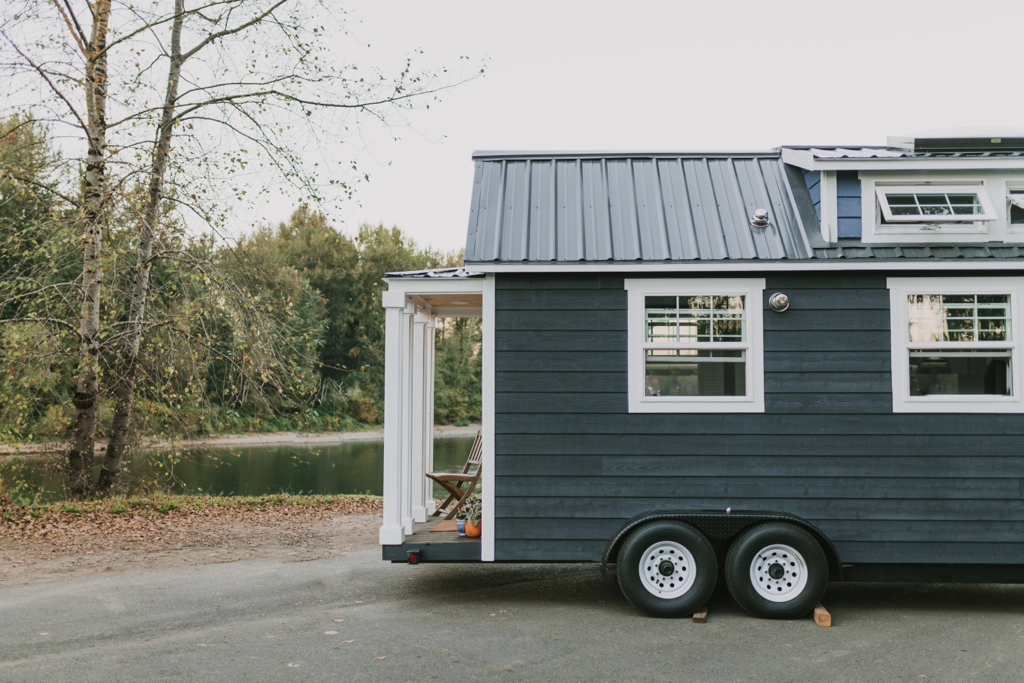Maintaining the exterior of a tiny home is crucial for preserving its structure and appearance over time. Regular inspections and timely repairs prevent small issues from turning into costly damage. Essential exterior maintenance includes cleaning gutters, sealing gaps, and protecting surfaces from weather exposure.
Tiny homes face unique challenges due to their size and mobility, which means routine care is more important than ever. Staying on top of painting, roof checks, and siding care extends the life of the home and maintains its value.
Routine Exterior Cleaning and Care
Maintaining the exterior of a tiny home requires consistent attention to prevent dirt buildup, damage, and wear. Effective cleaning methods balance regular upkeep with occasional intensive treatments to keep surfaces durable and visually appealing.
Regular Washing and Debris Removal
Frequent washing removes dirt, dust, and organic debris that accumulate on siding, windows, and trim. Homeowners should use a garden hose with a spray nozzle or a soft brush combined with mild detergent to avoid damaging delicate materials.
Clearing leaves and branches from gutters and around the foundation prevents water damage and pest entry. Regular inspections ensure no buildup blocks drainage, especially after windy or stormy weather.

Effective Use of Pressure Washing
Pressure washing is effective for removing tough grime, mildew, and algae on exterior surfaces. However, it requires careful control of water pressure and distance to avoid damage.
For wood or vinyl siding, pressure should typically stay below 1500 psi. Specialists like Pressure Washing Doral recommend test patches first to gauge surface tolerance.
Homeowners unsure about technique or equipment should get expert advice on pressure washing. Professional services ensure effective cleaning without risking water intrusion or surface erosion.
Seasonal Deep Cleans
Deep cleaning at least twice a year tackles accumulated grime in less accessible areas, such as under eaves, porch ceilings, and roof edges. This process often includes scraping loose paint and applying treatments for mold or mildew.
Spring deep cleans prepare the tiny home for rainy seasons, while fall cleans remove pollen and dirt ahead of winter.
Seasonal checks during cleaning also cover caulking and sealants, helping prevent moisture damage through cracks or joints. These periodic efforts extend the lifespan of exterior materials and paint.
Inspecting and Maintaining Building Materials

Regular inspection and prompt upkeep prevent damage and preserve the tiny home's structural integrity.
Checking Siding and Paint for Wear
The siding acts as the first defense against weather and pests. It should be inspected every six months for cracks, warping, or loose panels.
Paint protects siding from UV rays and moisture. Look for peeling, blistering, or fading paint, which indicates the need for repainting.
Address minor damage early by sanding rough areas and applying primer before repainting. This extends the life of the siding and maintains the home’s appearance.
Wood siding demands more frequent checks than vinyl or metal since it is prone to rot and insect damage.
Repairing Caulking and Seals
Caulking fills gaps around windows, doors, and corners to block drafts and water intrusion. Over time, caulk can crack or shrink, reducing effectiveness.
Inspect caulk annually for gaps, cracks, and discoloration. Replace damaged caulk by removing old material completely before applying a new, waterproof sealant.
Seals on vents and utility entries also require checking to prevent leaks. Proper sealing reduces energy loss and avoids mold growth inside walls.
Protecting Outdoor Features and Structures
Proper care of a tiny home's exterior elements extends its lifespan and keeps it safe from weather damage.

Maintaining Roof and Gutters
The roof protects the entire structure, so inspecting it regularly is crucial. Look for damaged or missing shingles, cracked seals, and signs of water buildup after storms.
Cleaning gutters prevents blockages that can cause water to overflow and damage walls or the foundation. Remove leaves, dirt, and debris at least twice a year, more often if surrounded by trees.
Check for sagging gutters and secure loose brackets. Ensure downspouts direct water at least 3 feet away from the home's base to avoid erosion. Consider installing gutter guards for easier maintenance.
Caring for Decks and Railings
Decks and railings face constant exposure, so checking for rot, loose nails, or splinters is necessary. Remove debris and clean the surface with a mild detergent regularly.
Apply a water-resistant sealant or stain every 1-3 years, depending on climate and use, to protect wood from moisture and UV rays. Pay close attention to joints and areas near the ground.
Inspect railings for stability to prevent safety hazards. Replace any damaged boards promptly and sand rough spots to extend the deck's lifespan and maintain safety.






Share: